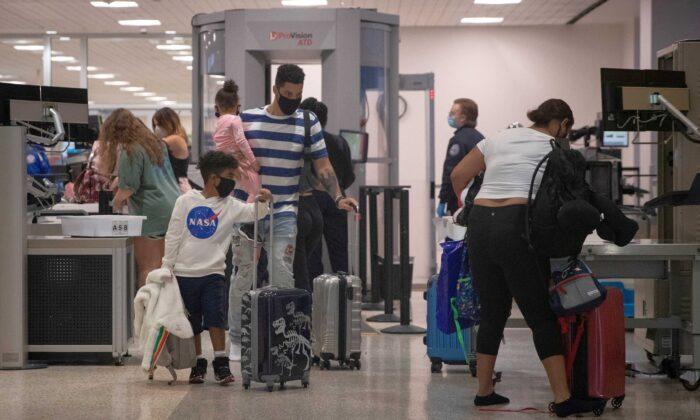WASHINGTON—U.S. airlines carried 62 percent fewer passengers in October over the same month last year, the U.S. Department of Transportation (DOT) said on Dec. 8.
The 62 percent decline from October 2019 was the smallest year-to-year decrease since March when the coronavirus pandemic slashed U.S. travel demand. The largest airlines carried 29.9 million passengers in October, down from 78.3 million passengers in October 2019. U.S. domestic demand was down 60 percent and international demand was off 77 percent.
Airlines for America, an industry group, said this week it estimates that through late November, passenger demand remains down 62 percent.
A spike in COVID-19 cases and guidance from U.S. health agencies urging Americans to avoid holiday travel has led to a recent softening in travel demand.
International travel demand has also been harmed by U.S. travel restrictions that bar most non-U.S. visitors who have recently been in the European Union, United Kingdom, China, and Brazil from visiting the United States.
American Airlines said on Dec. 4 that “rising COVID-19 case counts and associated travel restrictions ... have resulted in a slowing of net bookings growth, which has persisted into December.”
Delta Air Lines warned on Dec. 3 that it would lose about $2 million more than forecast each day in the fourth quarter, but kept a target to halt its cash burn next spring.
Airlines are hoping vaccine prospects will start lifting demand throughout 2021, but they don’t expect a full recovery for some time.
The Transportation Department said on Dec. 7 that U.S. passenger airlines reported third-quarter after-tax net losses of $11.8 billion and a pre-tax operating loss of $15.9 billion.






Friends Read Free